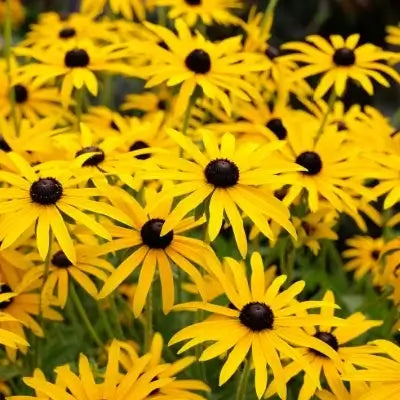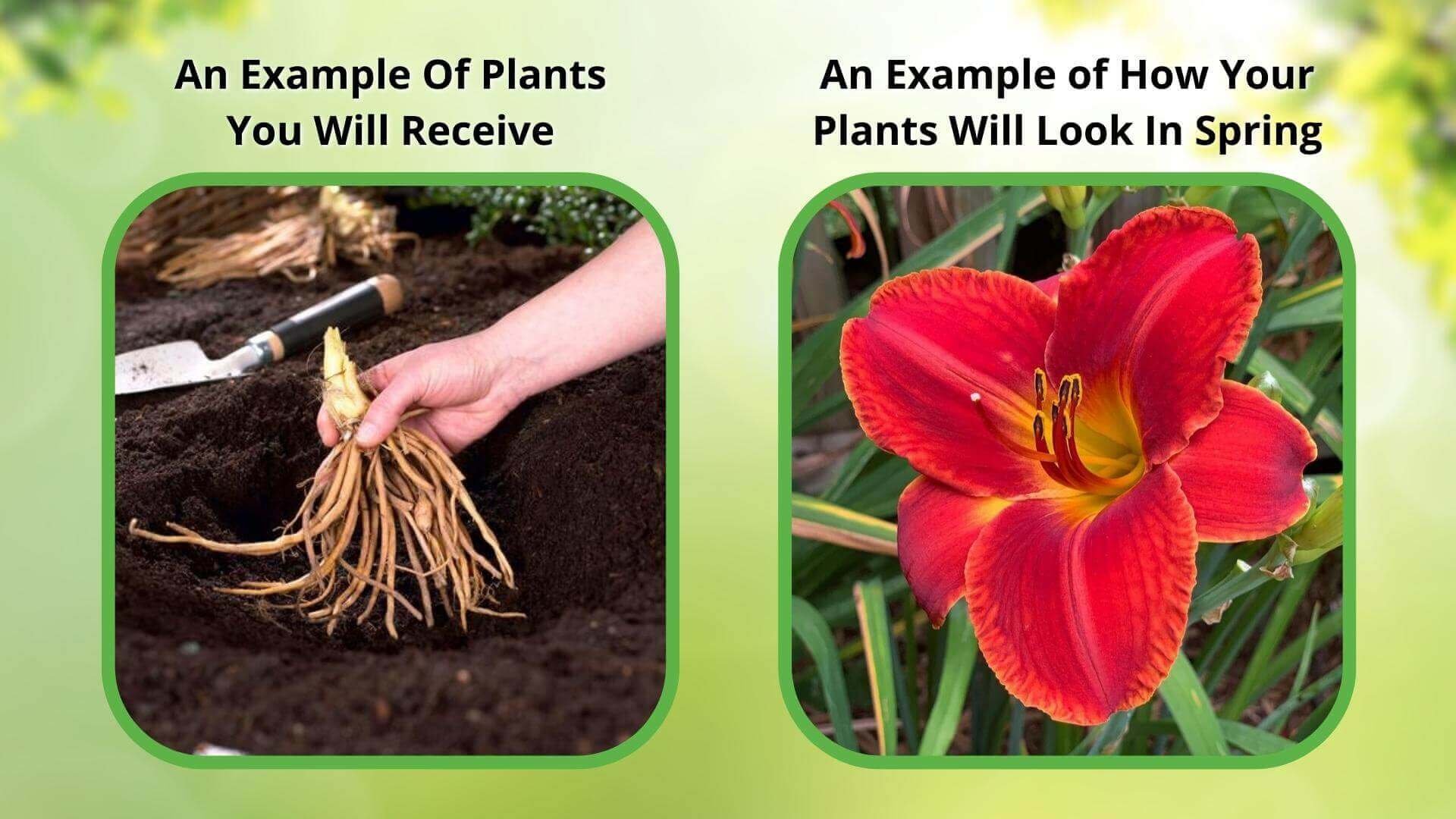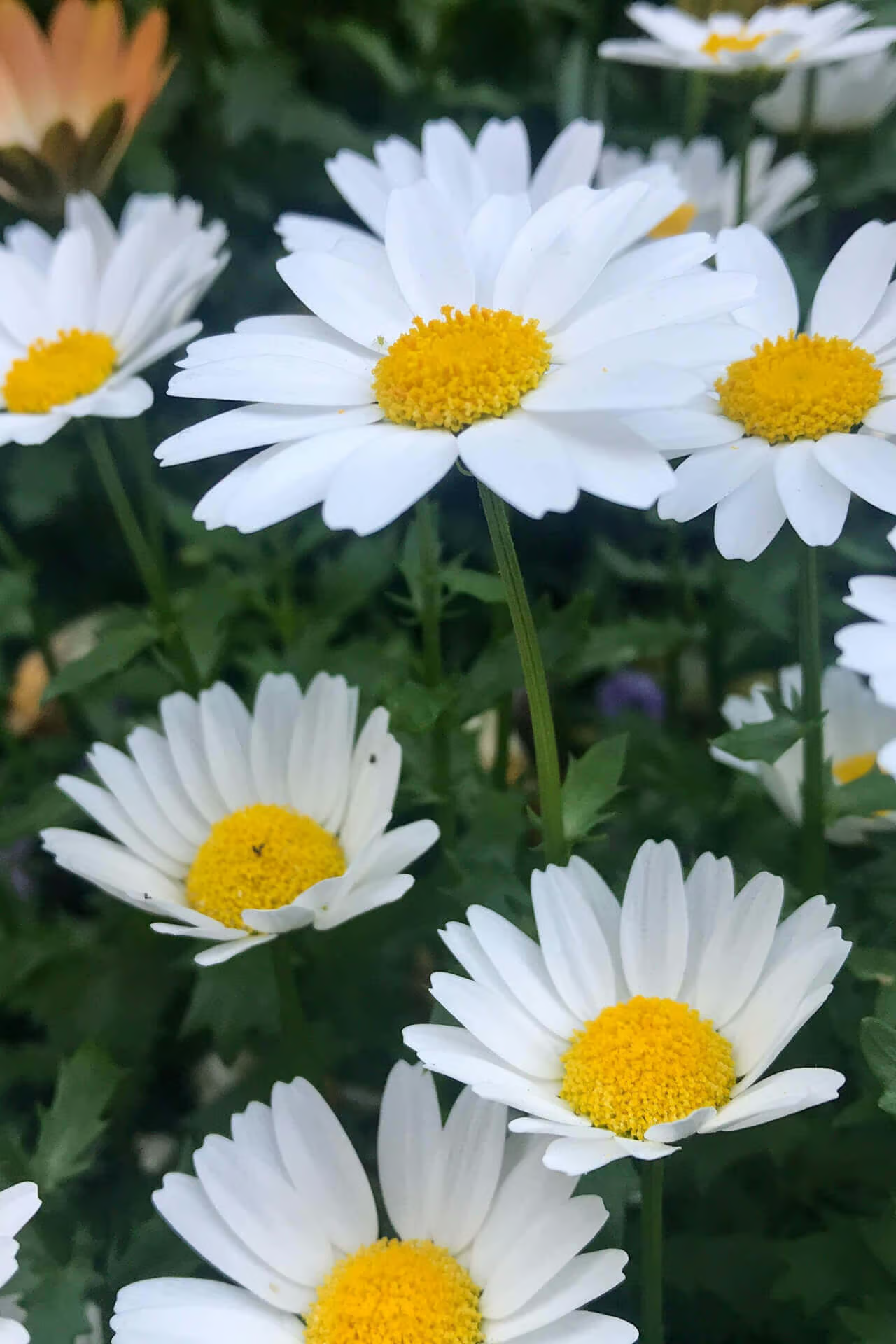
perennial plants for sales
Long-lasting flowers throughout summer
Attracts butterflies and pollinators
Versatile in various garden settings
Thrives in
ZONE 4ZONE 5ZONE 6ZONE 7ZONE 8ZONE 9Planting Season:
Year-RoundWhen you add one plant to cart, it automatically adds the second one free on Bogo deals.
Shasta daisy plants are the "he loves me, he loves me not" flower. They're prized for their vibrant yellow center and vibrant white petal blooms, making them one of Spring and Summer's most desired perennials in flower beds and gardens. The Latin name for this beauty is Leucanthemum x superbum. It's a classic perennial plant that is low-maintenance and thrives in a variety of soils. These plants are known for their large blooms, with many layers of petals on each plant supported by one stalk. The plant reaches 36-44" inches in a garden.
We've all seen them: flowers, perhaps on the side of the road or in a neighbor's front yard, with stunning white petals and centers as golden yellow as the setting sun. For good reason, they is one of the most iconic flowers in America (even though it didn't originate in America).
This sturdy, stout flower is as beautiful as it is vital - much like America. It's a lovely addition to any outdoor space, and in the following post, we will tell you everything you need to know about it.
From stem to stamen, they is a stunning flower partly because of the stark contrast of colors it creates. The central disk is filled with tiny stamens that become gilded when pollen is produced. The pollen gives this flower's center its iconic yellow burn. Layers of pure white petals around the central stamen cluster grow with soft, textured surfaces. The petals resemble clean linens, giving this flower its pure, untainted aesthetic. When taken in tandem with the bright yellow hub, the leaves of they create a stunning contrast that has become synonymous with summer beauty and leisure.
A single stem supports each flower, and the petals bloom upward initially and then spread out laterally. This creates a bright effect evocative of the rising morning sun and its alabaster rays. The stem is thin green and primarily grows upright, allowing the flower to become the focal point. They naturally grows in clumps but can be cultivated more orderly with some essential maintenance. The plants can grow to about 2-3 feet tall at maturity.
One of the things that attracts many home gardeners and professional landscapers to they is that the petals are as white as anything seen in the natural world. This can provide an excellent backdrop for more colorful flowers. It can also affect a classic, clean aesthetic as the star of your outdoor spaces. The plants have even been used to accent the paint of commercial and residential properties.
It's hard to think of a more iconic flower than this one. But this perennial has more to offer than just good looks. Look at the following list of its benefits to see what we mean:
Excellent Bouquet Flowers - They are an essential flower in your garden if you like to make floral arrangements. As cut flowers, these daisies can last for a week or more, and the white coloration of their petals allows for a clean canvas to paint a blooming masterpiece.
Compared to flowers like they and others, they are more significant. It blooms wider and has a larger central cluster of stamens. This can be an advantage for people who want as much color and coverage as possible from one.
Can These Perennials Be Planted in Various Soil Types
Yes, they can! Daisies often grow wild because they are naturally hardy flowers. This one is no exception. It can thrive in various well-drained soil types and is highly disease and pest-resistant. So, no matter what kind of soil you are working with, you will likely be able to grow them.
This lovely perennial plant produces pollen that attracts pollinators like bees and repels pests. It is an excellent choice for any gardening enthusiast who wants to help support their local bee population.
Naturalized Plants
They are the culmination of cross-breeding by the legendary botanist and horticulturist Luther Burbank. Burbank helped naturalize them, which are native to parts of Europe. Today, gardeners and landscapers can reap the benefits of Burbank's hard work by quickly planting and maintaining these beautiful perennials.
As a naturalized species, they only require a little maintenance once the root system has been established. You can also quickly get it to colonize if you want more growth.
F.A.Q.s
Now let's look at some of the essential facts about this plant:
Where do They Grow Best
They grow best in full sun with less nutrient-rich soil. The soil will likely have more foliage than actual blooms if it is rich.
Should You Cut Them Back
You can deadhead them to extend the blooming season. After the first frost, cut the stems to stand between 1 and 2 inches above the soil.
Do They Last All Summer
Yes. The typical bloom time for them is June to September. So these flowers can provide your garden with color all year long.
What Month Do You Plant Them
It will depend on how you are planting them. If you are using containers, planting the seeds in spring or autumn would be best. If you put the plant directly in the ground, early fall or spring would be best.
Getting the Most Value for Your Gardening Here at T.N. Nursery, we want to spread the joy of gardening to as many people as possible. That's why our plants are of premium quality. Order from us to get the most from your gardening efforts.
This perennial is native to Europe but has since naturized itself in many parts of the United States. It thrives in full sun or filtered shade, and soil richness isn't a major issue with this flowering native due to its resilience and stability when planted in various soil types.
It Is a Hardy Native Perennial That Is Offered Here At TN Nursery
It creates a dramatic effect and a gorgeous backdrop in all garden settings, such as flower beds and gardens. It thrives in well-drained soil. It's a hardy perennial plant that is disease—and pest-resistant and does well in various conditions.
What is the best fertilizer for them
Shasta daisies are best fertilized with a slow-release fertilizer applied in spring. This way, they get the right combination of nutrients through a formula such as 10-10-10. Do not over-fertilize your plants, especially nitrogen fertilizer, as this will result in few florets.
Are they easy to maintain
They are considered easy-to-grow plants suitable for starting gardeners. They need little control and minimal watering once established. Dead flowers should be removed to encourage them to bloom over and over again.
Can I grow one indoors
Even though these daisies are associated with the outdoors, they can be cultivated in pots at home with adequate lighting. Locate them where they will receive a lot of sunlight and provide good drainage to avoid root rot.
Companion plants for them
These daisies are ideal companions for lavender, black-eyed Susans, and coneflower plants. Such companions are identical in light requirement and soil preference, ensuring the production of a colorful and proportional garden bed.
Where does they grow best
These daisies prefer full sun and good drainage. They can grow optimally in different climates - in the USDA zones 4-9.

Bloom Season
Summer
Bloom/Foliage Color
White
Height at Maturity
Over 12"
Care
Shasta Daisies thrive in well-drained soil and require regular watering. Deadhead spent blooms to encourage continuous flowering. Fertilize early spring and cut back in fall to maintain plant health and vigor.
Plant Reproduction
Shasta Daisies spread underground through rhizomes, which can quickly increase the size of the clump
Shipping date depends on the date displayed and chosen when you order from the product's page.
We only accept returns on plants verified dead. If you think your plants have died, we offer a 1 year warranty, please use use this File a Claim Link to verify dead plants and start with return warranty process.




Attracts Pollinators:
Its bright blooms draw bees and butterflies, enhancing the overall health and activity in your garden.
Long-Lasting Flowers:
Enjoy extended blooming periods from early summer to fall, providing continuous color and beauty.
Versatile Planting:
Shasta Daisy thrives in various soil types and sun conditions, fitting well in diverse garden settings.
Bright, Cheerful Blooms:
Shasta Daisy’s classic white flowers with golden centers add a fresh and vibrant look to any garden.
Caring Tips
Each box contains detailed care instructions and information about your product. But here's the basics.
Care Tips
Shasta Daisies thrive in well-drained soil and require regular watering. Deadhead spent blooms to encourage continuous flowering. Fertilize early spring and cut back in fall to maintain plant health and vigor.
Light Requirements
Shasta Daisy thrives in full sun to partial shade. For optimal blooming, it needs at least 6 hours of plain daylight daily, though it can tolerate some afternoon shade. Adequate sunlight promotes vigorous growth and abundant flowering.
Hardy Planting Zones
4 • 5 • 6 • 7 • 8 • 9
How often should I water my plants?
How do I know if my plant is getting too much or too little sunlight?
What should I do to prepare my plants for winter?
What are the signs that my plant needs fertilizing?
How can I prevent pests from damaging my plants?
How do I choose the right plant for my climate zone?